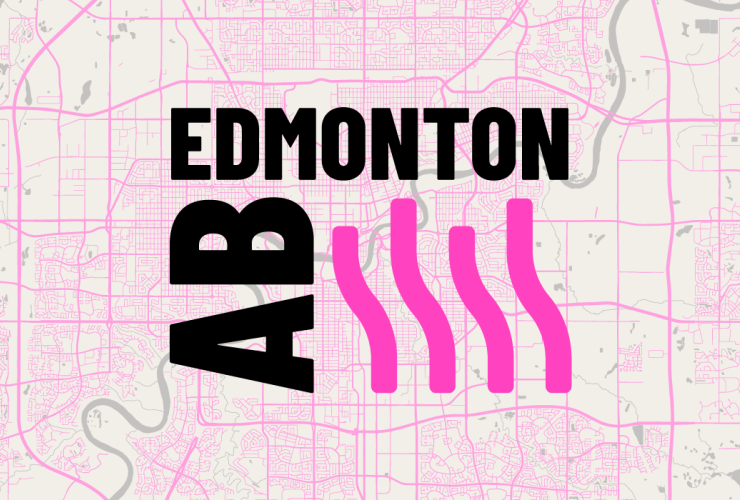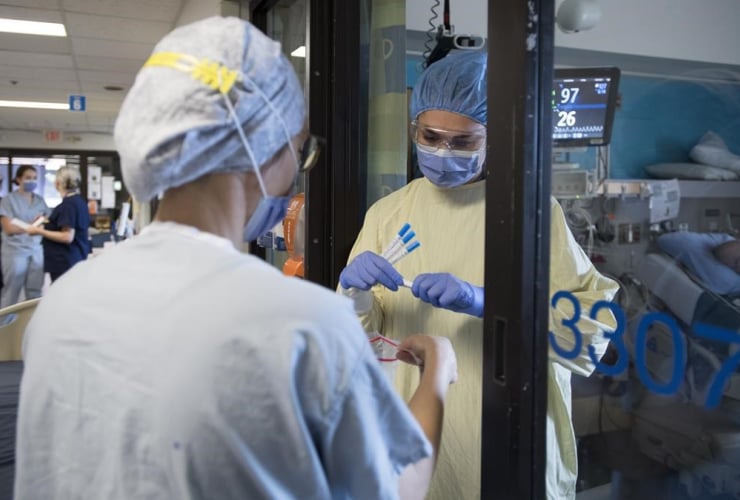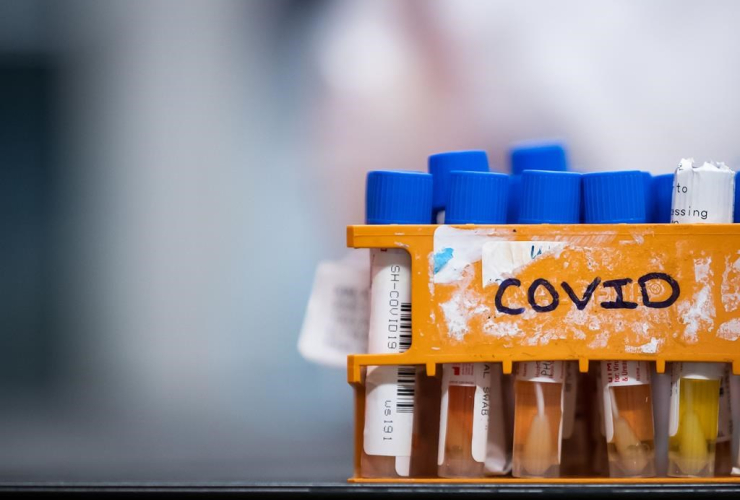Facing unbearable hip pain and more than a year-long wait list for an MRI in 2020, Judy Duchscher felt she had no choice but to pay $1,500 to get the scan done privately.
“It's like somebody has a knife inside my hip. That is how far and how severe the pain was,” said 62-year-old Duchscher.
“I knew that I could not wait a year because this is just the beginning,” she said. “All I saw were numbers rolling around in my head and I saw this pain for another two and a half years... And I thought I'll just jump off a bridge. There's just no way I will deal with this.”
Duchscher is a registered nurse and associate professor of nursing at Thompson Rivers University who started seeking a total hip replacement a year and a half ago. She said if she waited for the MRI, there would still be a six-month wait to see a specialist and then another year’s wait for the operation.
An avid trail runner and active person, Duchscher was left unable to bear weight on her left leg as her hip pain worsened in early 2020.
Backlogs for medical imaging procedures like CT scans, X-rays, ultrasounds, and MRIs are impacting Canadians like Duchscher and something needs to be done, said Dr. Gilles Soulez, president of the Canadian Association of Radiologists (CAR).
Before the pandemic, Canadians were waiting an average of 89 days for MRI imaging, according to CAR’s 2022 pre-budget consultations report. This is far longer than the 30-day wait time recommended by the Canadian Wait Time Alliance, an organization focused on identifying the longest medically acceptable amount of time a patient should wait before receiving treatment.
Come 2022, the Conference Board of Canada estimates the average wait time for an MRI will rise to 133 days.
Current wait times vary across provinces and territories.
On July 28, the Ontario government announced up to $324 million in new funding to enable hospitals to perform more surgeries, MRI and CT scans and procedures like colonoscopies as part of a wider surgical recovery, $35 million of which is earmarked for MRI and CT imaging.
Ontarians who completed the Ontario Medical Association's (OMA) health-care survey identified wait lists for procedures as their top priority, said Dr. Adam Kassam, president of the OMA.
“Going into the next phase of this pandemic, that is going to have to be an all hands on deck for everyone in the profession, as well as our health system workers,” he said.
In March, the Saskatchewan Ministry of Health reported patients waited an average of 105 days for an MRI.
A spokesperson from the BC Ministry of Health said although MRI wait times increased last year due to COVID-19, “in the current fiscal year to date (April 1 to June 24), MRI wait times are the lowest since 2016/17.”
In an email, a ministry spokesperson said the province is “committed to further improvements in patient access to MRI exams by optimizing diagnostic space, teams, and adding additional MRI scanners … maximizing operating hours, increasing essential personnel and improving wait-list management and communication with patients.”
CAR recommends the federal government help provinces implement a national e-referral program so referring health professionals have better access to medical imaging guidelines and can ensure patients receive the right test at the right time.
Kassam said he thinks most physicians would be in support of a centralized referral system for managing patient care and believes COVID-19 could serve as an opportunity to restructure our health-care system.
CAR is also calling on the federal government to invest $1.5 billion over five years in medical imaging equipment through the Canada Health Transfer and support the creation of a National Data Science Institute to harness AI for the strategic prioritization of resources like health workers, technology, and infrastructure.
In March, the Liberal government tabled Bill C-25, which would provide provinces and territories with an additional $5 billion for health care, including a $4-billion one-time top-up to the Canada Health Transfer to support provinces and territories in clearing the backlog caused by the pandemic.
The funding could be used for a variety of urgent needs, said Anna Maddison, spokesperson for the Public Health Agency of Canada, in a statement to Canada’s National Observer.
Duchscher was able to expedite her imaging needs by paying out of pocket, but she knows that simply isn't an option for most Canadians.
“My heart breaks for those individuals, because if they were experiencing the pain that I was experiencing, their lives are being altered as we speak. They are unable to provide for their families, and they are unable to find joy,” she said.
Natasha Bulowski / Local Journalism Initiative / Canada’s National Observer
This is absolutely a problem
This is absolutely a problem that could be made to go away by throwing money at it. We should do so.
I'm a bit surprised that Judy
I'm a bit surprised that Judy D., a medical professional, and therefore "on the inside", didn't exercise the nasty option that we health care people know about! (I'm a retired O R nurse) Despite the knowledge that it's a mis-use of emergency services, we know that arriving on the doorstep of the emergency department and refusing to leave until we are treated is one of the ways to get the care we need! Simply paying out of pocket for treatments etc. only enables the problem!







Comments